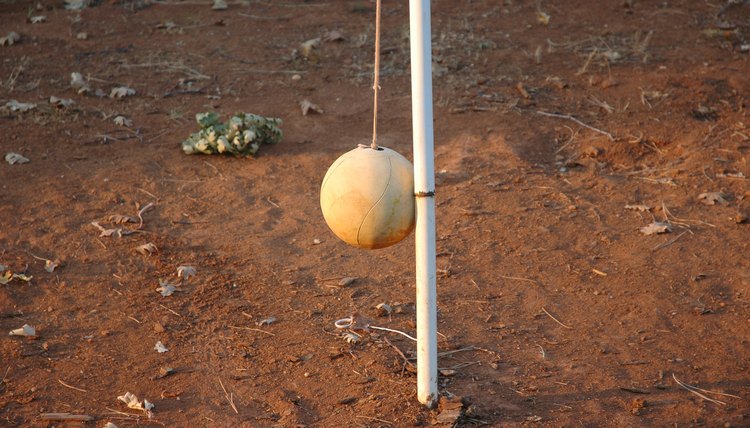Tetherball Pole Regulations

Commonly seen on playgrounds, tetherball isn't just a game for kids. It requires speed, athleticism and strategy to hit the ball around the pole for a win. While no official pole height regulations exist from the World Tetherball Association, 10 feet tall is considered the standard for adults, but children might need shorter poles, such as 6 or 8 feet tall.
Here's Why It's 10 Feet
To play tetherball, a player serves the ball, which is attached to a rope, around the pole, and then the other player tries to hit the ball in the opposite direction. The goal is to get the ball and rope to wrap all the way around the pole. The rope allows the ball to swing widely around the pole at first and then the ball gets closer to the pole as the rope wraps around more. The 10-foot pole height keeps the ball high enough as it swings on the end of the rope and encircles the pole so that adults can easily hit the ball in their preferred direction. With a 10-foot pole, the ball swings at about chest level for adults.
Player Size Matters
If mostly children are playing with a specific tetherball, a shorter pole height works better. With the height that works for adults, the ball ends up swinging at about head-height on many children, and you don't want the kids getting hit in the head as they try to play. Instead, take off at least 2 feet in height to have an 8-foot pole. For smaller kids, such as younger elementary children, a 6-foot pole might work best.
Starting Out Too Tall
When you're ready to buy your tetherball pole, you'll notice the 10-foot poles are actually 12 feet long. This allows room for normal installation, which requires you to dig a hole 2-feet deep and fill it with concrete to hold the pole securely. If you need a pole you can move instead, such as one installed in a concrete-filled tire or bucket, opt for one that's the actual height you need. In this case, check carefully to make sure the pole you buy is 10 feet high, not 12 feet high and designed to have 2 feet buried.
Cheaper Isn't Better
Height isn't the only consideration when installing a tetherball pole. The pole material determines how sturdy the pole is and how long it lasts. These poles are pulled powerfully in all directions by the centrifugal force of the ball, often absorbing hard jars as the ball changes directions abruptly. Galvanized steel poles that are at least 2 inches in diameter are the best option. If possible, avoid the aluminum kits that have several pieces that fit together to make the pole. These are cheaper than the one-piece steel ones, but the joints create weak points where the pole can break, and the aluminum won't stand up to hard play and the elements as well as the steel.
